Container Soils - Water Movement & Retention V
tapla (mid-Michigan, USDA z5b-6a)
16 years ago
Featured Answer
Sort by:Oldest
Comments (150)
lilfrenchgardener
15 years agolast modified: 9 years agotapla (mid-Michigan, USDA z5b-6a)
15 years agolast modified: 9 years agoRelated Discussions
Container Soils - Water Movement & Retention X
Comments (153)Not at all, and I don't remember writing anything that should leave anyone with that impression. If I had to identify the crux of the thread, it would be that to take advantage of highly aerated media and their sharp drainage, it's essential to start with a very large volume of coarse ingredients, and there should never be enough fine material to fill all the spaces between the large particles. When you add a marble/perlite) to a jar filled to the rim with sand or peat), aeration of the medium in the jar DECREASES, and continues to decrease as you add more marbles/perlite. It is only when you have added a volume of marbles/perlite) so large there is not enough sand/peat) to fill all the desirable pores between the large particles that aeration begins to INCREASE. This is called the "threshold proportion". Al...See MoreContainer Soils - Water Movement and Retention XI
Comments (150)Hi Al, With all the ingredients in hand, I've started the sifting process and had a few questions. I'm trying to swap out 50 containers worth of soil so I'd prefer to do this in the most efficient way. I am using a 9x9 hardware cloth (.088" openings) to filter the fines. Here are the three ingredients I was able to source: 1) Shasta: Orchid Fir Bark: (1/8" - 1/4") http://shastabark.com/products.htm 2) Turface MVP 3) 1/8" Crushed Granite (Desert Gold) http://www.lyngsogarden.com/index.cfm?event=Display.Home.Product.Group&homeCategory=STONE&categoryid=1094&productgroup=PEBCOB&groupname=Pebbles%252C%2520Cobbles%2520%2526%2520%2520Colored%2520Gravel Questions: 1) It seems like it takes a decent amount of time to screen out the fines for one container. I also have constructed two other screens to be used to filter out the larger particles (a 1/4" for the large fir bark and a 9x9 (.1387") for the larger turface/granite). I'm assuming that at the end of the day it is more important to screen out the fines then to screen out the few larger pieces which may be in the mix. Would this be correct? I'm just trying to save some time and there doesn't seem to be that many larger pieces in the mixes. 2) Do you usually rinse out the mixes before you combine them? Does this help get additional dust/fines out? 3) What do you do with all the fines/dust that you sift out? If you are screening out larger pieces what do you with them? Thanks so much in advance. Your advice and guidance have been invaluable. Best, Kernul1...See MoreContainer Soils - Water Movement and Retention XVII
Comments (202)Exactly, the paper i pasted from describes the same phenom you have been describing for over 10 years. I have always raged that the big greenhouse media suppliers claim that 30% perlite into a peat is a high porosity mix. And so many growers prefer short squatty containers [helpful for blow over prevention but nothing else] Container Geometry is almost as important as the mix. i remember in 1984 I took a 400 level greenhouse management course at University of Delaware. The prof soaked a rectangular sponge and held it by the edges parrallel to the sink flatwise and let water drain, then he rotated the sponge on the shorter vertical axis and more water drained, when that free drainage ended he then rotated the sponge vertically in it tallest plane and more water drained. When I read your suggestion about using a draping shoelace as draining wick to lower the PWT the distance of the wick, I shouted YES at the elegant simple brilliance. In 1977 I grew a marijuana plant in a milk crate full of gravel, the stalk was over 2 inches in diameter [no different than growing in glass.] BTW, in your gritty mix what are the ratios and actual particle size for each component? I would think to use slightly larger particle sizes than i think you were using and i would probably consider using zeolite or a calcined DE or calcined clay. BTW, Ep minerals makes several absorbents both DE and Clay, Calcined or regular as various spill absorbers available in any auto parts store. 5o pounds for about 10 dollars. Don''t know the particle sizes but likely need to be screened to eliminate the fines. The clays are generally calcium bentonite and not sodium bentonite so less sodium and less swelling. I beileve Arcillite and Tuface are calcium bentonites. I was just thinking that decomoposed granite and even bark add no water holding capacity but with DE and Proper sized ceramics you could add more waterholding capacity but still maintain the airspace. The airspace in the ep mineral clay was pretty low when I measured it last, but I did not screen it. Somewhere I have a spreadsheet with AFP, WHC, TP, TPv, etc for over a dozen components and mixes. I have run quite a few in both 16 oz and taller 32 oz cups, [1 liter exactly when filled to rim overflow which makes that size intuitively easy for all the math. I think i found your posts about 3 years ago and then lost them. Am I correct in thinking you have some water release curve data around somewhere. Someone posted some WRC showing that Axis DE or perhaps the Axis clay media held huge amounts of water but easily released over 75% to the plant. TI can not find that post. I was actually searching for Vertical hydraulic conductivity, Capillary Rise and Capillary rate and wicking when your links showed up. The axis DE is like $90 a bag for 50 pounds so i think I could more cheaply reproduce from other products but have to screen. where I live in idaho, there is a Celatom DE plant less than 60 miles away, 2 zeolite mines, a sodium bentonite mine, WHC and Airspace mid 20s in the 2 larger particle sizess. Also the best white pumice [Hess] source mine a few hours away. I had hoped better water holding capacity. I plan on rerunning all the mixes again in a few months now that i have more standardized my process using multiple cup sizes, some of them tamped or shaken to settle, some top watered, some bottom water, measure distance of subsidence if any. I also have a vegetronix tensionometer now and will take additional measures at various depths to measure the exact tension and also verify depth of pWT which i can usually see through the transparent cups if I use a marking dye and saturate from below. Anyway I will share those spreadsheets in the near future If i were to guess, you have some sort of plant and soil science background or some civil engineering background and a love for plants. At any rate, your explanations and examples are some of the best I have ever come across, and your shoelace suggestion is brilliant, truly. i read so much WRONG advice or the wrong analysis for reason why something works or does not work. it is refreshing to come across accurate information Garret Goyette...See MoreContainer Soils - Water Movement and Retention XX
Comments (150)Yes, I stated that I'm not worried about the aluminum, all the same I won't use aluminum sulfate either. Although it may be safe, I worry about toxic levels. Just because lead is in all soils doesn't mean it's a good idea to add more. Same with aluminum. And if you mix turface without a mask, you will be exposed to it. As far as water absorption Axis noted that turface holds 95% of it's weight in water. Pumice only holds 15% and DE holds 142% Try diatomaceous earth in your tests. Optisorb is about the largest size available to home gardeners. Axis makes an excellent size, but is for commercial use only. Numerous studies document it's use as superior to most other amendments. Such as " Effects of diatomite on soil consistency limits and soil compactibility" by Ekrem Lutfi Aksakala, Ilker Anginb, , , and Taskin Oztasa Or "Effects of diatomite on soil physical properties" by the same authors. Also "Sustainable effects of diatomite on the growth criteria and phytochemical contents of Vicia faba plants." Mona M. Abdalla* Department of Botany, Faculty of Science, Ain Shams University, Cairo, Egypt. The Axis company also has great info on all amendments. As far as particle size, do a test. Fill a pot with sand, and one with gravel. Stick a pole in, and see which one gives more resistance. It seems to me gravel would. But I might be wrong? I don't know physics well enough to figure it out on paper. Ah and pumice is further dashed to the ground and called a fake, not a single user rises to defend. Well we can agree to disagree, my day job is a laboratory researcher,or was, I'm retired. If turface has various pore sizes then it is not very well made. Thanks for pointing that out. So you do not believe the manufacturer? Controlling pore size in fired clays is often accomplished with the use of polymers such as Polyethylene glycol. This process is extremely important to control how well purifiers work, or how well they hold up with the addition of salts. You are incorrect about the pore size. Yes pore sizes differs, but that process is used to make different products, and is very controlled. Turface is meant to have small pores size or it would ineffective in it's intended use. The porosity of fired clays is extremely important to have a consistent product such as fired brick used to built houses. Varying pore sizes will compromise the strength of the brick. Selling a product and manufacturing one are very different things. The pore size I reported is for calcinated clay. Range of pore sizes is from .1 -.01 microns. Median is .045 . Plants need a .2 micron minimum pore size to utilize. This info is from a study by Andreas Kalytta-Mewes, Kathrin Mattern, and Armin Reller University of Augsburg, Chair of Solid Body Chemistry Georg Armbruster Soil Laboratory. The pore analysis in the study was conducted by Quantachrome,Bavarian Institute of Applied Environmental Research and Applied Technology. Of course it appears none of these sources trump Al. Who has not provided any data at all to back his claims. Please prove to me that pore size is bigger, thinking Al is right because you sell clay products is not proof. After saying all this will turface work? Yes, it will. Works pretty good! Is it ideal? No, it's not, but what is? It's still worth trying for sure. It didn't work for me, but that means nothing. it has worked well for others. It would be nice if it allowed easier access to stored water, but it does store water, and air, and it lasts a long time, maybe 20 years. That's decent. It's a decent product, or appears to be. It would not be on the market if it didn't work. I know it's not meant for potted plants, but it is meant for grass. DE seems a better product, it has it's own problems. it is marketed though for plants more than ball fields, although it is marketed for that too. It's marketed for large commercial gardens. I use it in my garden. I use turface too for my grass, works well. Just not that well in pots for me. All i said that it didn't work for me. Sorry blame me, it's what you usually do when the mixes fail, you blame the poster. Many have said DE doesn't work for them. I actually believe them. All gardening is local. This post was edited by Drew51 on Mon, Dec 29, 14 at 15:33...See Morerogue64
15 years agolast modified: 9 years agotapla (mid-Michigan, USDA z5b-6a)
15 years agolast modified: 9 years agorogue64
15 years agolast modified: 9 years agotapla (mid-Michigan, USDA z5b-6a)
15 years agolast modified: 9 years agokatskan41
15 years agolast modified: 9 years agotapla (mid-Michigan, USDA z5b-6a)
15 years agolast modified: 9 years agokatskan41
15 years agolast modified: 9 years agotapla (mid-Michigan, USDA z5b-6a)
15 years agolast modified: 9 years agotapla (mid-Michigan, USDA z5b-6a)
15 years agolast modified: 9 years agokatskan41
15 years agolast modified: 9 years agotapla (mid-Michigan, USDA z5b-6a)
15 years agolast modified: 9 years agojustaguy2
15 years agolast modified: 9 years agokatskan41
15 years agolast modified: 9 years agosuseart
15 years agolast modified: 9 years agotapla (mid-Michigan, USDA z5b-6a)
15 years agolast modified: 9 years agoadamskj
15 years agolast modified: 9 years agotapla (mid-Michigan, USDA z5b-6a)
15 years agolast modified: 9 years agolou_spicewood_tx
15 years agolast modified: 9 years agoryan_tree
15 years agolast modified: 9 years agoed-claude
15 years agolast modified: 9 years agotapla (mid-Michigan, USDA z5b-6a)
15 years agolast modified: 9 years agojustaguy2
15 years agolast modified: 9 years agotapla (mid-Michigan, USDA z5b-6a)
15 years agolast modified: 9 years agotapla (mid-Michigan, USDA z5b-6a)
15 years agolast modified: 9 years agojustaguy2
15 years agolast modified: 9 years agoed-claude
15 years agolast modified: 9 years agotapla (mid-Michigan, USDA z5b-6a)
15 years agolast modified: 9 years agoPat z6 MI
15 years agolast modified: 9 years agotapla (mid-Michigan, USDA z5b-6a)
15 years agolast modified: 9 years agomeyermike_1micha
15 years agolast modified: 9 years agotapla (mid-Michigan, USDA z5b-6a)
15 years agolast modified: 9 years agomeyermike_1micha
15 years agolast modified: 9 years agotapla (mid-Michigan, USDA z5b-6a)
15 years agolast modified: 9 years agoltruett
15 years agolast modified: 9 years agotapla (mid-Michigan, USDA z5b-6a)
15 years agolast modified: 9 years agoltruett
15 years agolast modified: 9 years agotapla (mid-Michigan, USDA z5b-6a)
15 years agolast modified: 9 years agokandhi
15 years agolast modified: 9 years agotapla (mid-Michigan, USDA z5b-6a)
15 years agolast modified: 9 years agochester_grant
15 years agolast modified: 9 years agotapla (mid-Michigan, USDA z5b-6a)
15 years agolast modified: 9 years agokatskan41
15 years agolast modified: 9 years agotapla (mid-Michigan, USDA z5b-6a)
15 years agolast modified: 9 years agokatskan41
15 years agolast modified: 9 years agophoenix7801
15 years agolast modified: 9 years agokatskan41
15 years agolast modified: 9 years agotapla (mid-Michigan, USDA z5b-6a)
15 years agolast modified: 9 years agointercessor
15 years agolast modified: 9 years ago
Related Stories
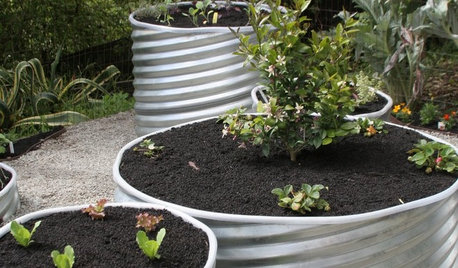
CONTAINER GARDENSContainer Gardening Basics: The Dirt on Soil
Learn the types of potting soil available and the best mixes to help your containers thrive
Full Story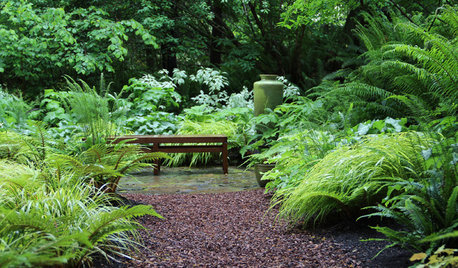
GARDENING GUIDES10 Solutions for Soggy Soil
If a too-wet garden is raining on your parade, try these water-loving plants and other ideas for handling all of that H2O
Full Story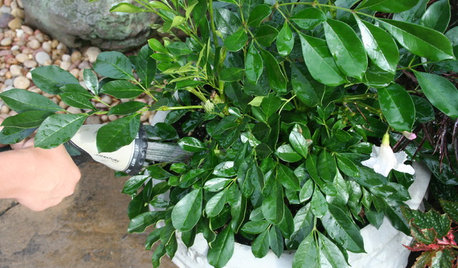
CONTAINER GARDENSContainer Garden Basics: How and When to Water Potted Plants
Confused about soil moisture, the best time to water and what watering device to use? This guide can help
Full Story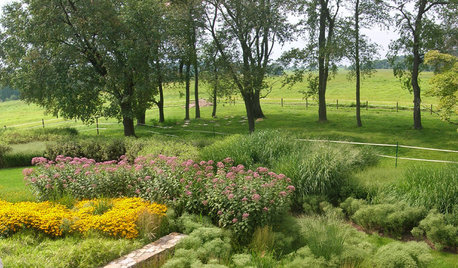
GARDENING GUIDESHow to Stop Worrying and Start Loving Clay Soil
Clay has many more benefits than you might imagine
Full Story
GARDENING GUIDESHow to Pick a Mulch — and Why Your Soil Wants It
There's more to topdressing than shredded wood. Learn about mulch types, costs and design considerations here
Full Story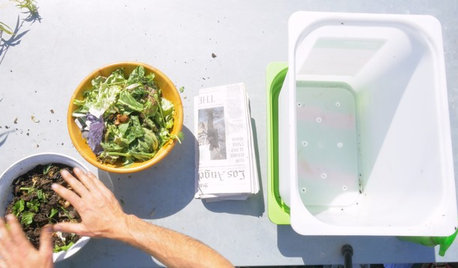
GARDENING GUIDESHouzz TV: Make a Worm Bin for Rich Soil and Happy Plants
A worm-powered compost bin that can fit under a sink turns food scraps into a powerful amendment for your garden. Here’s how to make one
Full Story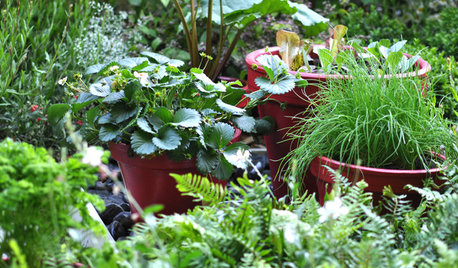
FARM YOUR YARDHow to Grow Vegetables in Containers
Get glorious vegetables and fruits on your patio with a pro’s guidance — including his personal recipe for potting mix
Full Story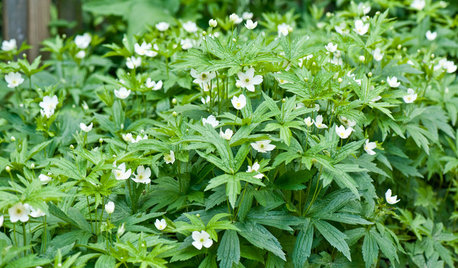
GARDENING GUIDESGreat Design Plant: Anemone Canadensis Adds Pizzazz to Water’s Edges
Plant Canadian anemone along pond, lake or stream edges for a splash of white flowers in late spring
Full Story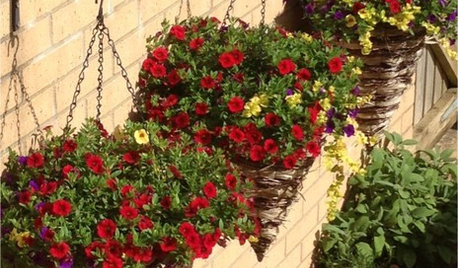
CURB APPEALCrazy for Colorful Cones: 5 Container Plantings Beyond the Bowl
Give even a small garden an exuberant vibe with hanging cones overflowing with blooming beauties
Full Story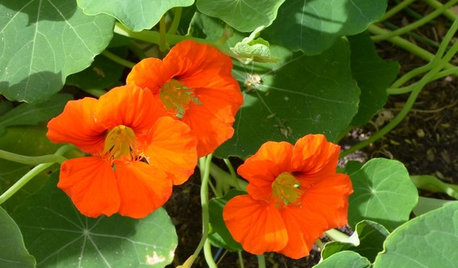
CONTAINER GARDENS7 Deer-Resistant Flowers for Your Summer Containers
Grow these as protection for edibles or just for their colorful beauty — deer might not like them, but everyone else will
Full Story


justaguy2